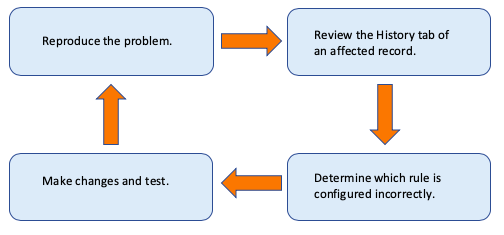
A rule is a statement of automated logic the system executes in order to perform an action or multiple actions. Rules are a lot like action buttons, but instead of clicking a button to trigger them, they run automatically based on preconfigured settings. Most systems accumulate increasingly complex rules as they become more robust. The first several sections include details about each stage of the troubleshooting process. To skip to examples that show the complete process, go to the Troubleshooting Examples section of this page.
| Admins can prevent many issues by following best practices when initially configuring a rule. Familiarity with best practices makes it easier to spot and diagnose problems with rules. |
The general troubleshooting process for rules is:

Before any troubleshooting the source of the issue must be determined. In general, rules are responsible for:
For example, if a table isn't showing in the left pane, it's safe to say no rules require troubleshooting because rules don't control the left pane. If creating a new employee record is supposed to automatically email the new employee's manager, but that manager doesn't receive an email or receives the incorrect email template, the system almost certainly has an issue with an event-specific rule.
When a problem arises, it's vital to take note of what caused the issue, and to reproduce the steps if possible. This leads to a simpler testing process, and can help determine if a rule is the issue. If a rule is in fact the issue, knowing what caused it to run can help identify the specific rule.
The best place to learn more about an issue is by checking a record's History tab. Check the History tab of records that have been improperly updated by a rule, or records that did not get updated when they should have.
| If a record wasn't updated, it doesn't necessarily mean the rule didn't run. For example, a condition in a rule's If-Then-Else action could be met that doesn't make any changes to the record. In this case, the behavior of the rule is still included in History Event Details. |
Here are two examples of which records to check given some common circumstances:
After opening a record, go to the History tab. History Events shows a list of changes that have occurred to a record over time and what caused them, making it an extremely valuable section for testing purposes. The Modified By column tracks who or what made the change, including the names of individual rules that made changes. If the value under Modified By is not a rule, it's still possible a rule is involved. For example, it's possible that a rule ran after someone made an edit. If the Modified Fields value matches the fields that were incorrectly updated in a record, check History Event Details by clicking the magnifying glass icon.

History Event Details contains a detailed snapshot of the actions called by a rule for a specific record. If an action looks incorrect, consult the configuration in the rule's Action tab. Although the format of History Event Details varies depending on the type of action the rule called, the nature of the information stays largely consistent. Consider the History Event Details for the rule modification showed in the History Events example above. The section shows the fields that changed, the before and after values, and the name of the Update Fields action that caused it.
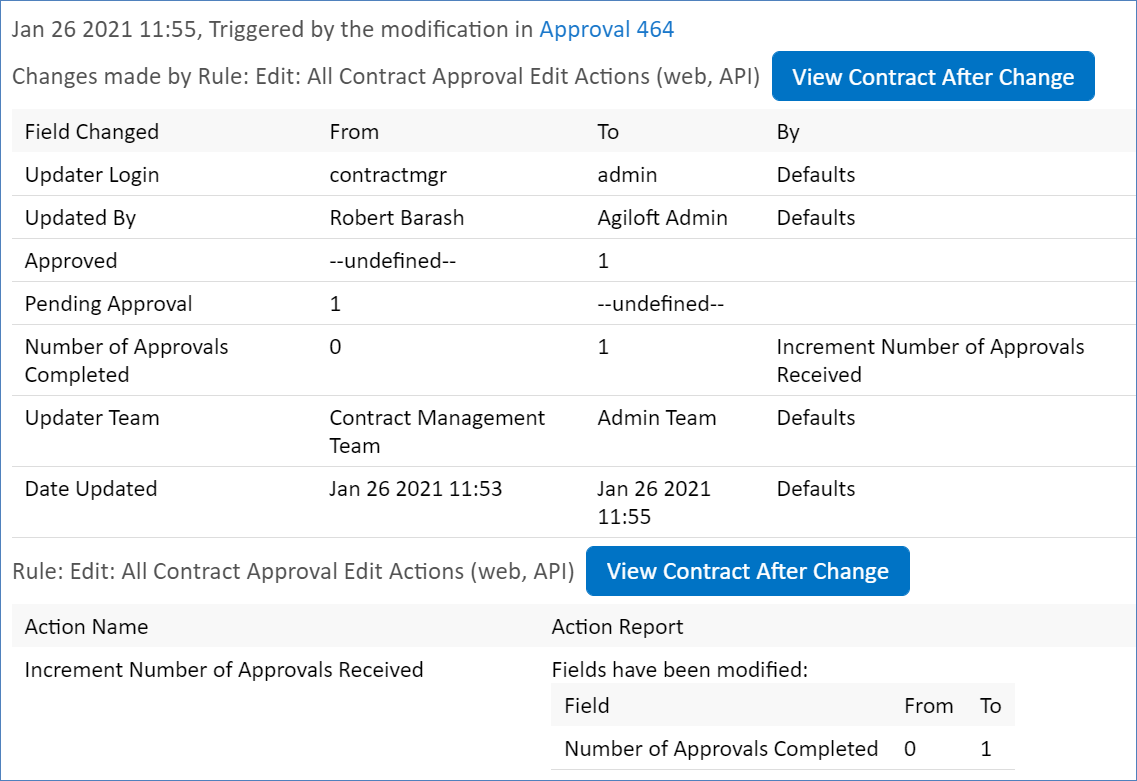
For another example, see the History Event Details below for a record created by an admin that caused two event-specific rules to call two separate If-Then-Else actions. These were both triggered because a record was created, and for each, History Event Details shows the results of the actions that ran.

Although the format of these History Event Details is different, the information gathered here is similar. Instead of showing a list of updated fields, this History Event Detail section shows the If-then-else flow (ITEF) under the Action Report to monitor exactly how actions within rules interacted with a system. The ITEF is used to diagnose and then solve issues; it shows which clause was verified in a rule's If-Then-Else action, and what additional actions ran because of the verified clause. This information is recorded in the "search matched" and "action executed" rows of the ITEF, respectively.
The three If-Then-Else actions called All Creation Actions by Web/API, Set Address fields, and Determine Tax Exempt Status action show what happens when an If or an ElseIf clause is verified; the "search matched" row will display the details of the matching clause. The Set State province action shows what happens when an Else clause is verified. "Action executed" shows the action name regardless of which type of clause is verified. If any of this appears incorrect, consult the configuration of the action in the rule's Action tab.
If you can't find the rule in History Event Details, ensure that the rule is enabled, check the values in the Conditions column, and verify the saved search is set up to include the correct subset.
After a potential culprit rule is identified using the History tab, check the settings of the rule using the Rules table for improper configuration. To access the Rules table, click Setup [Table] and go to the Rules tab.

This table makes it easy to skim a rule's settings and quickly identify something that might be causing the problem. The columns have specific uses relative to troubleshooting:
The All Edit Validations action is an If-Then-Else action. The Action Description begins with an
|
Review the settings on each tab of the Rules Wizard to make sure they're configured correctly. Many issues with rules come from missing or misinterpreting a single setting. For information on how to diagnose problems with the Rules wizard, compare the rule's settings with the recommendations in the Creating and Editing Rules section of the Rules article, and make modifications. It's likely that the issue can be traced to improper configuration in the Conditions tab, the Schedule tab, or in an action in the Action tab.
Test the system after each modification. If a rule is only tested once after several settings were modified, determining what exactly solved the problem becomes more difficult.
To test a rule:
| When troubleshooting rules in a non-production environment, change the History entry management value to "Only record history entries when record is modified by actions called by the rule." Changing this option won't reset the History table but will limit what is recorded from now on. This can help declutter the History Events section and make troubleshooting rules a bit simpler. This setting isn't recommended in production environments, as it can prevent important History events from being recorded. |
The following examples demonstrate the end-to-end troubleshooting process laid out in the previous sections of this article. These examples can help you figure out where to begin with issues you find in your own system.

Lei, an admin, receives a ticket saying that a Location record was created with a US State field of WA, but the Income Tax Status field was set to Non-Exempt. According to the ticket, when a Location record is created or edited with a US State field value of WA, the Income Tax Status field should automatically be set to Exempt.
Lei can tell from the ticket that the rule is supposed to run when a record is created or when a specific field is edited, making it an event-specific rule. Here are the steps that Lei should follow to successfully troubleshoot this issue, and other issues like it:

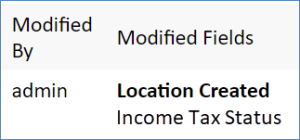
In History Event Details, identify a potentially misconfigured rule by the name, its actions, or the fields it modifies; use the name, actions, or modified fields to identify which rule is most likely causing the issue. Rule: Tax Exempt is identified as the improperly configured rule by the rule's name, Action Name, and Field Changed.
Confirm the rule is improperly configured by checking the ITEF. The ITEF shows that when this record was created, the system checked it against the clauses in the If-Then-Else statement, and the record matched the clause that runs the Set Tax Exempt Status to Not Exempt action. Because an unexpected action is being called, either the If-statement was improperly configured, the action was improperly configured, or the record was not created with WA in the US State field. Lei hypothesizes that the If-statement must be the issue.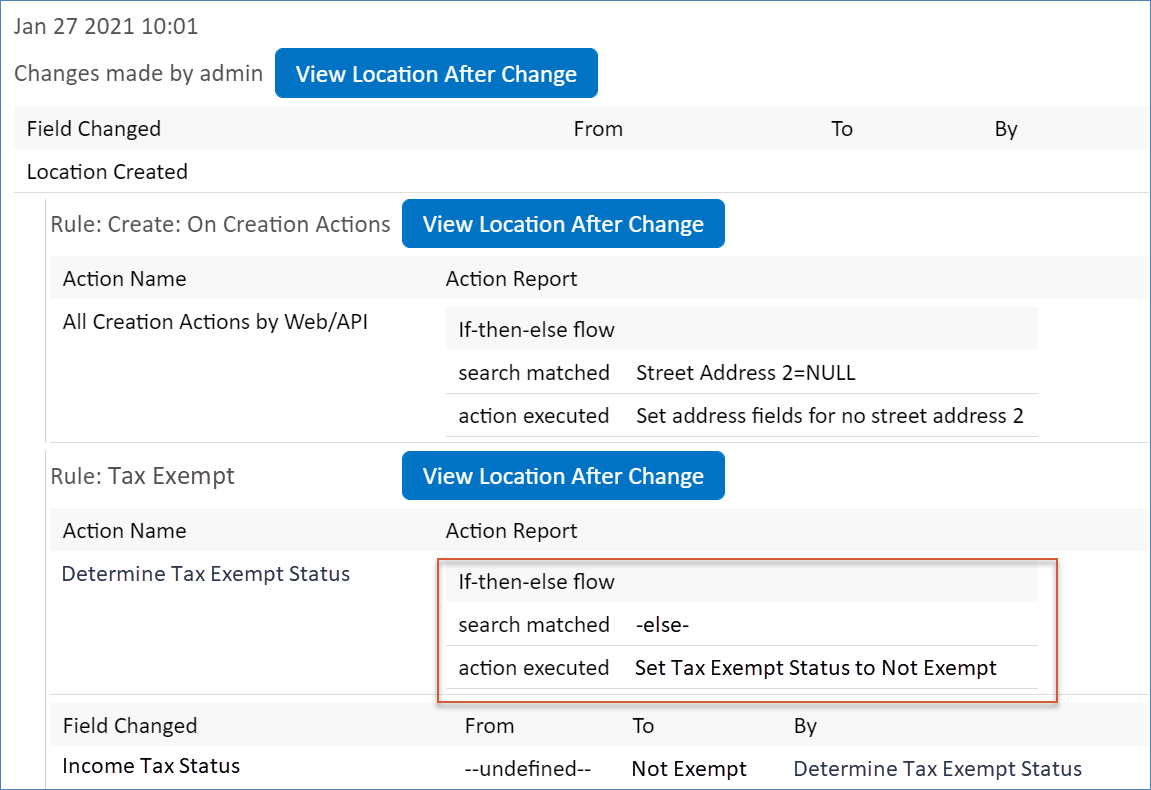
Click the Details tab. At first glance, the action's configuration seem normal. However, Lei realizes that the State or Province field and the State Abbreviation field are not the same field. 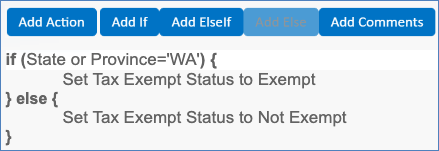
If-statement. 
If-statement was the cause of the issue, and it is now configured properly, the record should have the correct values. If the value is still incorrect, double-check the rule's configuration, and repeat the process.
Imagine it's the morning of December 2nd, 2020. Alex the admin receives a ticket detailing that the system is supposed to update the Date Updated and Date Created fields of each record in the Company table on the first of each month at 9 PM, but the records weren't updated yesterday night. Since this edit is supposed to occur at a specific time interval, it's likely that a time-based rule requires troubleshooting. Here are the steps that Alex should follow to successfully troubleshoot this issue, and other issues like it:
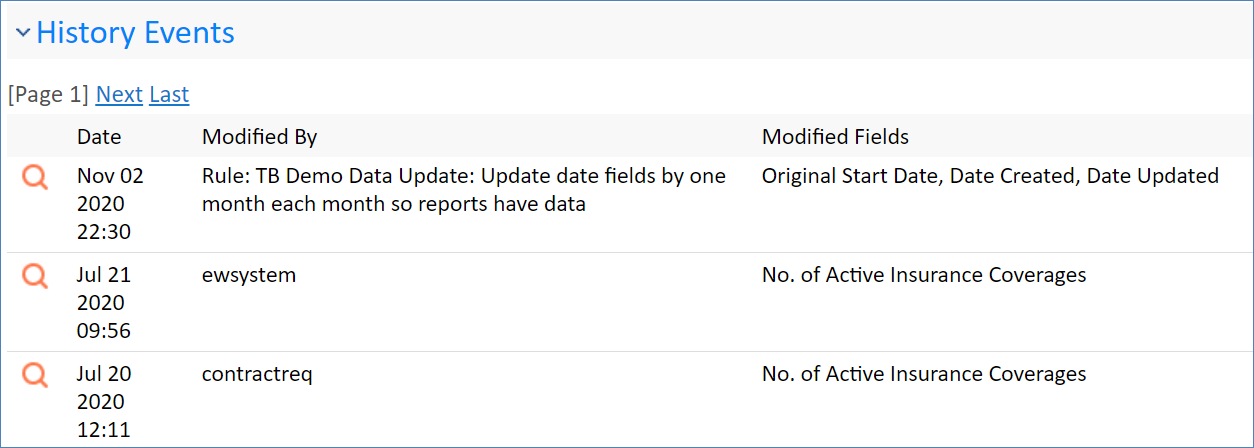
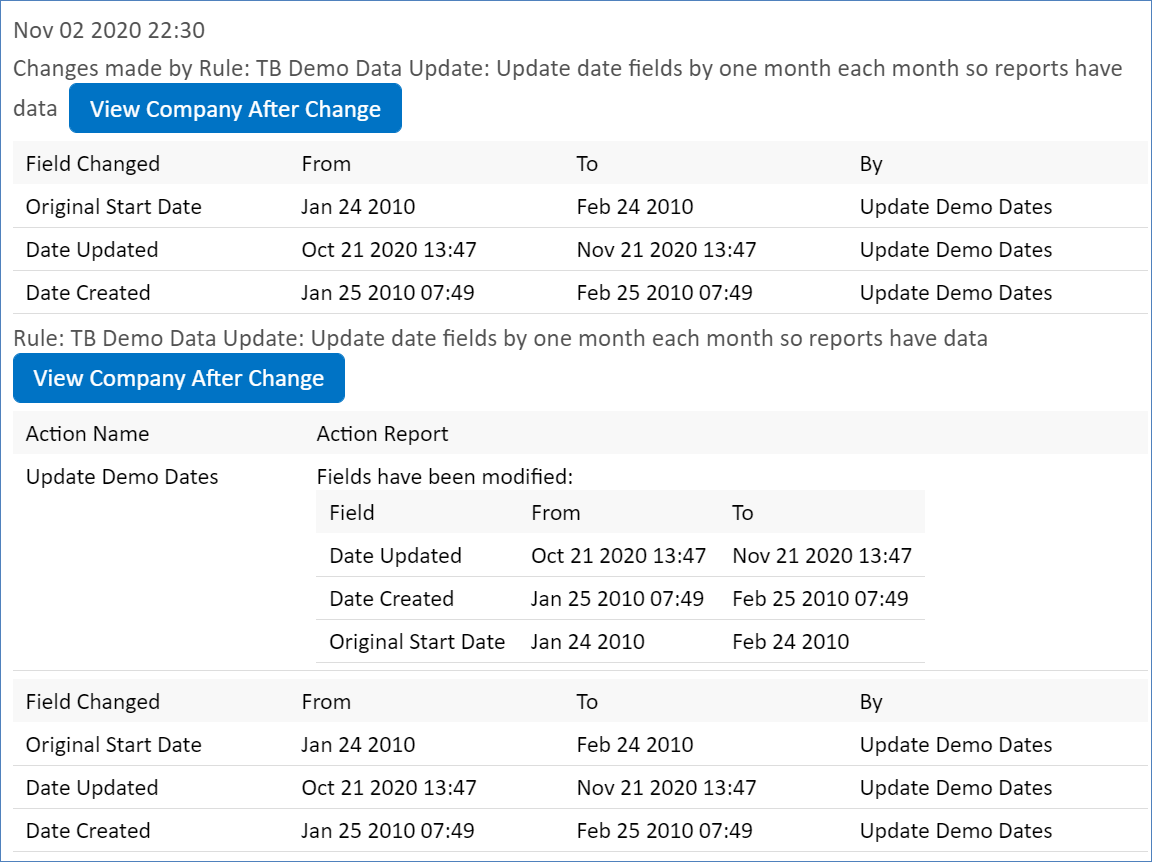
Click Setup Company and navigate to the Rules tab.
The following steps show how to troubleshoot the example rule based on information gathered in step 5. Every time-based rule is configured differently, but the process is similar. |
In the example, the Schedule tab shows the rule was incorrectly configured to run on the 2nd day of the month at 10:30 PM. Alex adjusts these values to reflect the desired outcome.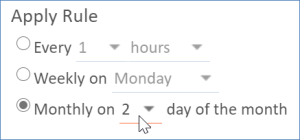
Normally a rule should be tested after each adjustment. However, there is no way to test the correct time interval, besides waiting for that time interval to come and go. Luckily, every other aspect of a time-based rule can be tested as soon as it is configured. |
Navigate to the General tab. Scroll down and click Save & Run Now to test the rule. Save & Run Now can be stylized as Run the rule now if no recent edits were made to the rule. The functionality remains the same.

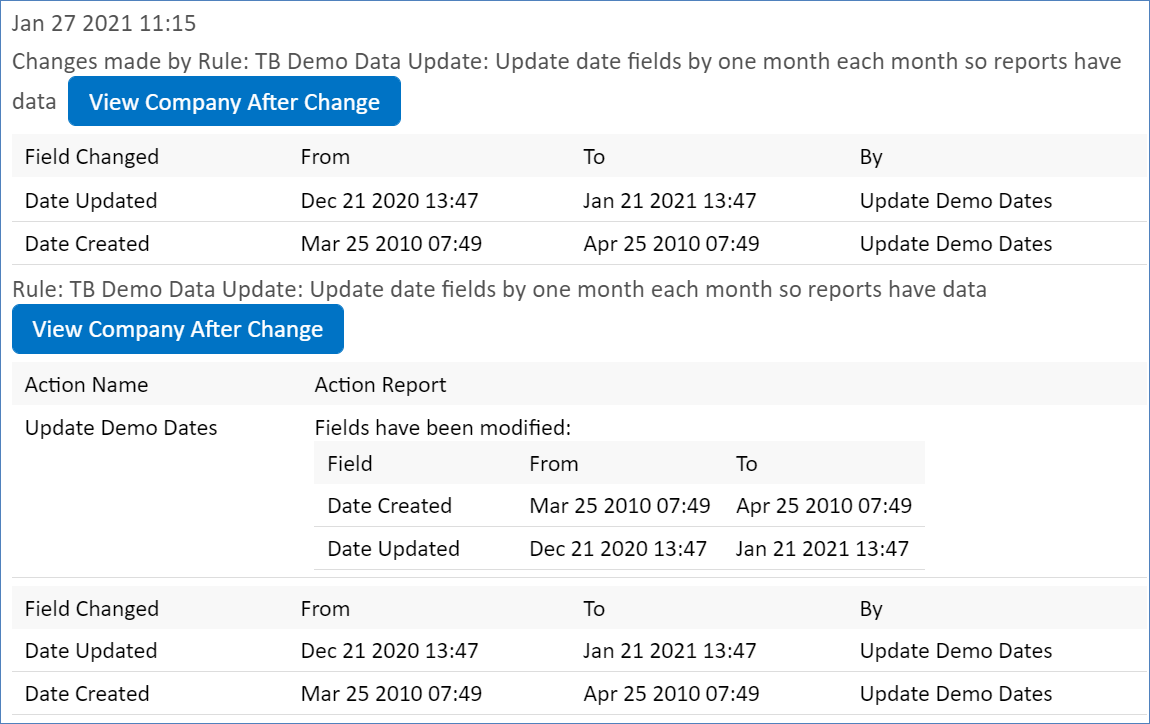
Alex has to wait until next month to ensure the rule runs at the correct time, but was able to diagnose why it had ran at the wrong time and changed it accordingly. However, Alex was able to diagnose and then successfully fix another issue that arose during the troubleshooting process for the first rule. This example shows how to use the History Event Details section to troubleshoot for a specific issue as well as how much additional information you can gather from a pass through this section.
Related articles |